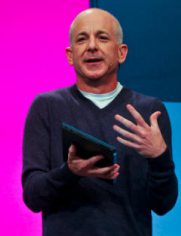Microsoft and former Windows chief Sinofsky agree on 'retirement' terms

Microsoft's former Windows President Steven Sinofsky and Microsoft have come to terms over Sinofsky's resignation from Microsoft on November 12, 2012.

A Securities and Exchange Commission (SEC) filing published on July 3, dated June 25, offers details about the "retirement agreement" between the two parties.
Sinofsky, who left Microsoft abruptly after the Windows 8 launch last year, will be freed from his non-compete clause as of December 31, 2013, after which time he will be free to work for a Microsoft competitor. Up until that date, Sinofsky has agreed not to disparage Microsoft, not to advocate certain Microsoft customers choose competitors' products; and not to encourage Microsoft employees to quit or work for other companies.
According to the filing, Sinofsky also "agreed to a release of claims against Microsoft and its related parties." This may be more of a formality than anything else, as Sinofsky is not believed to have instigated any lawsuit against Microsoft.
In return, Microsoft is paying Sinofsky the value of his outstanding unvested stock awards granted prior to Microsoft's fiscal year 2013 (which ended June 30), plus 50 percent of the shares of stock awarded to him during fiscal 2013 -- a total of 418,361 shares. Payments will be made over time through August 2016, with the value of the shares determined by market price as of each vesting date. These shares are estimated to be worth $14.2 million at today's value.
Microsoft also agreed to indemnify Sinofsky against "claims arising from acts or omissions relating to his employment at Microsoft pursuant to the Company’s Articles of Incorporation." (Again, this appears to be a formality than anything else at this point in time, as far as we know.)
A Microsoft spokesperson provided the following statement about the SEC filing:
“Given Steven’s 23 years of strong service at Microsoft, which included leading teams that produced six versions of Office and two versions of Windows, the company will continue to provide him with the economic value of the stock awards he earned during his employment, similar to the retirement benefits we provide employees who work at least 15 years and retire at 55 or older. This agreement provides a number of important considerations for Microsoft, including a commitment that Steven will continue assisting with intellectual property litigation until January 1, 2017.”
I'm not sure specifically what kind of IP litigation Sinofsky may have been involved with and/or may be involved with at this time. Microsoft did not provide any specific examples.
Update: A couple of specic examples of IP litigation where Sinofsky played a role, according to a company spokesperson: Arendi v Microsoft, a patent infringement case from 2004; and MediaStream v Microsoft, a case settled earlier this calendar year.
Sinofsky left Microsoft abruptly after the Windows 8 launch last year. He has said publicly that it was his choice to leave the company when and how he did. At the time of his departure, there was a lot of scuttlebutt around alleged disagreements between Sinofsky and other members of the Microsoft management team, including CEO Ballmer, about Microsoft's plans around plans for inter-divisional collaboration.
Sinofsky is currently on sabbatical and teaching at Harvard Business School.